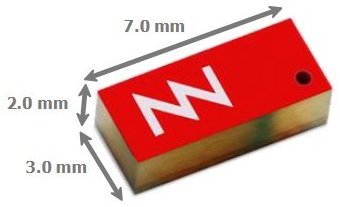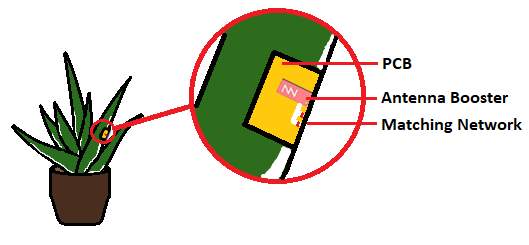Using a plant to increase the radiation efficiency of an antenna, it seemed like science fiction until recently. However, a simulation study including an Antenna Booster, a simple printed circuit board (PCB) and a basic leaf model showed that the use of the plant itself as an antenna might actually be closer to reality than we think.
A small antenna is preferable in many applications, mainly such that we can manufacture a lot of them at a reasonable price. When designing Internet of Things (IoT) applications, we are often dealing with low frequencies, and thus large wavelengths, which makes designing a small antenna a challenge. For the Internet of Plants (IoP), a network where plants exchange information about themselves and their surroundings, a small antenna is also preferable such that it can be attached to plants of all sizes, without the antenna becoming too heavy for the plant.
Unfortunately we not yet have applicable results of the conductivity properties of plants to use in simulation software, hence a salt water plane was used as a model of a plant leaf for simulations. A 10 x 12 mm PCB was designed with the sole purpose to hold the Antenna Booster and matching network (MN) onto the plant. This was essential since the Antenna Booster relies on the MN to operate.
A plant leaf does not have the same conducting properties as the copper of a PCB. If it had, replacing the PCB with the plant would work without a doubt. Unfortunately we not yet have applicable results of the conductivity properties of plants to use in simulation software, hence a salt water plane was used as a model of a plant leaf for simulations. A 10 x 12 mm PCB was designed with the sole purpose to hold the Antenna Booster and matching network (MN) onto the plant. This was essential since the Antenna Booster relies on the MN to operate.
Simulations of this structure showed that applying the salt water plane to the PCB including the Antenna Booster increased the radiation efficiency from 5% (without plant) to 20% (with plant), a factor 4 improvement. This shows that, for this design, no complex structure was needed to improve the radiation efficiency, only a salt water plane. With these simulations in mind, the idea that a real-life plant can actually improve the radiation efficiency suddenly does not seem so unrealistic anymore…
Team
- Lieke Geubbels (TU/e)
- Gabriele Federico (TU/e)
- Vojkan Vidojkovic (TU/e)
- Sander Bronckers (TU/e)
- Jaume Anguera, Ignion





